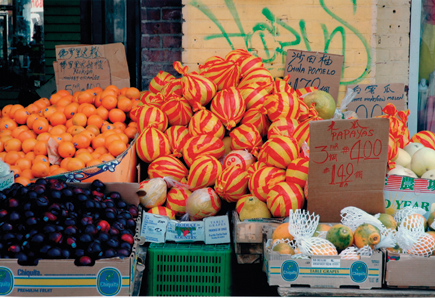There are a lot of machines that are created to be used in combination with a computer. One of the more commonly used machines for this purpose is the printer. The Canon PIXMA is a sleek styled unit that has a very contemporary look. Styled in the modern design of chrome and black this unit includes the black and color ink tanks used for printing.
Canon’s PIXMA iP8500 Photo Printer; Top Of The Line Model In PIXMA Printer Offerings
The first Canon letter-size photo printer to employ the ChromaPLUS eight-color ink system, the iP8500 is also the top of the line model in the PIXMA series. Replacing the Color Bubble Jet Photo Printer line, the newer machines boast some extra features, as well as greater speed and quality, thanks to new technology described in our sidebar. The iP8500 should be of greatest interest to serious photo enthusiasts, because it uses a full eight of the ChromaPLUS inks.
 |
The inkset includes additional red and green dyes, not available with the
six-color printers, for deeper, richer tones. According to Canon, the red ink
provides a 60 percent increase in the orange/red gamut. The green ink adds a
30 percent increase in the green gamut, ideal for a more accurate and deeper
rendition of grass and foliage.
This 4800x2400dpi model produces very high resolution, but it's actually
the smaller ink droplet size that produces superior results, especially in mid
tones: smoother, more finely detailed prints with better color tonality. Because
the micro-fine ink dots are virtually undetectable, the prints appear truly
continuous in tone, resembling traditional photographs. While the older i950
already made prints of photographic quality, the iP8500 can produce even better
results, noticeable especially when closely examining 8.5x11" prints.
Basic Print Making
Thanks to the user-friendly aspects of the iP8500, I was making my first print
15 minutes after opening the box. A simplified guide, plus automated software
loading from the Canon CD-ROM disc, made the setup straightforward. Eight individual
ink tanks are included and each slips into a shared print head that must be
installed by the user; this part of the process is not intuitive, but the Canon
diagram was helpful. After a print head alignment I was ready to start making
prints from images in my PC.
 |
|
|
In order to test the most basic features, I loaded some glossy Photo Paper
Pro and specified the media type, Auto Sheet Feeder, High Quality, and Auto
Color Adjustment. All other settings were made by the printer driver software
with full automation. In about 60 seconds of nearly silent operation, the PIXMA
iP8500 completed a very nice 8.5x11" color print in just over a minute
while a 4x6" print took only 30 seconds. That's faster than average
for a top-quality output; even higher speeds are possible at slightly lower
quality levels.
Evaluation: Although this is a high-end photo printer that
will satisfy imaging enthusiasts, the PIXMA iP8500 is surprisingly uncomplicated
in its basic operation. I was pleasantly surprised with the overall look of
the letter-size color glossies. They're bright, sharp, and richly colorful
with great clarity and definition of fine detail. Some of the prints are a bit
too light overall, but they're better than those I would expect from a
conventional enlargement made by a high-volume photofinishing lab.
 |
|
 |
|
 |
|
 |
|
|
- Log in or register to post comments


































